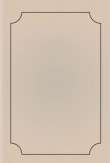You are here
قراءة كتاب Some Observations on the Ethnography and Archaeology of the American Aborigines
تنويه: تعرض هنا نبذة من اول ١٠ صفحات فقط من الكتاب الالكتروني، لقراءة الكتاب كاملا اضغط على الزر “اشتر الآن"

Some Observations on the Ethnography and Archaeology of the American Aborigines
and islands of the Lake of Titicaca, and whose civilization seems evidently to antedate that of the Inca Peruvians. I was in fact at one time led to consider this form of head as peculiar to, and characteristic of, the former people; but Mr. Foster’s extensive observations conclusively prove that it was as common among some tribes of the sea coast, as among those of the mountainous region of Bolivia; that it belonged to no particular nation or tribe; and that it was, in every instance, the result of mechanical compression.
In my Crania Americana I have given abundant instances of a remarkable vertical flattening of the occiput, and irregularity of its sides, among the Inca Peruvians who were buried in the royal cemetery of Pachacamac, near Lima. These heads present no other deviation from the natural form; and even this irregularity I have thought might be accounted for by a careless mode of binding the infant to the simple board, which, among many Indian tribes of both North and South America, is a customary substitute for a cradle. It is probable, however, that even this configuration was intentional, and may have formed a distinctive badge of some particular caste of these singular people, among whom a perfectly natural cranium was of extremely rare occurrence.
We are now acquainted with four forms of the head among the old Peruvians which were produced by artificial means, viz:
1. The horizontally elongated, or cylindrical form, above described.
2. The conical or sugar-loaf form, represented in the preceding diagrams.
3. The simple flattening or depression of the forehead, causing the rest of the head to expand, both posteriorly and laterally; a practice yet prevalent among the Chenooks and other tribes at the north of the Columbia river, in Oregon.
4. A simple vertical elevation of the occiput, giving the head in most instances a squared and inequilateral form.
A curious decree of the ecclesiastical court of Lima, dated A. D. 1585, and quoted by the late Prof. Blumenbach, alludes to at least four artificial conformations of the head, even then common among the Peruvians, and forbids the practice of them under certain specified penalities. These forms were called in the language of the natives, “Caito, Oma, Opalla, &c.;” and the continuance of them at that period, affords another instance of the tenacity with which the Peruvians clung to the usages of their forefathers.
4-* See more particularly the communications of Mr. R. C. Taylor, in vol. xxxiv, of Mr. S. Taylor, in vol. xxxiv, and of Prof. Forshey in vol. xlix.
5-* We take this occasion to observe, that skulls taken from the mounds, should at once be saturated with a solution of glue or gum, or with any kind of varnish, by which precaution further decomposition is effectually prevented.
6-* Incidents of Travel in Yucatan, I, p. 281.
6-† Rambles in Yucatan, p. 217.
6-‡ L’Homme Americain, Tome I, p. 306. I corrected my error before I had the pleasure of seeing M. D’Orbigny’s very interesting work. Amer. Jour. of Science, vol. xxxviii, No. 2. Jour. Acad. Nat. Sciences of Philadelphia, vol. viii; and again in my Distinctive Characteristics of the Aboriginal Race of America, p. 6.
6-§ See Proceedings of the Acad. of Nat. Sciences of Philadelphia for Dec. 1844.
7-* Amer. Jour. of Science, xxxii, p. 364.
7-† See Proceedings of the Acad. of Nat. Sciences of Phila., vol. ii, p. 274. If I mistake not, I was the first to bring forward this mode of interment practiced by our aboriginal nations, as a strong evidence of the unity of the American race. “Thus it is that notwithstanding the diversity of language, customs and intellectual character, we trace this usage throughout both Americas, affording, as we have already stated, collateral evidence of the affiliation of all the American tribes.”—Crania Americana, p. 246, and pl. 69. Mr. Bradford in his valuable work, American Antiquities, has added some examples of the same kind; and the Chevalier D’Eichthal has also adduced this custom, in connexion with some traces of it in Polynesia, to prove an exotic origin for a part at least of the American race. See Mémoires de la Société Ethnologique de Paris, Tome II, p. 236. Whence arose this conventional position of the body in death? This question has been often asked and variously answered. It is obviously an imitation of the attitude which the living Indian habitually assumes when sitting at perfect ease, and which has been naturally transferred to his lifeless remains as a fit emblem of repose.
8-* Crania Americana, p. 116.
8-† I have been looking to Dr. Dickerson, of Natchez, for more complete details derived from the tumuli of that ancient tribe which formed a link between the Mexican nations on the one hand, and the savage hordes on the other. Dr. Dickerson is amply provided with interesting and important materials for this inquiry, which we trust he will soon make public.
8-‡ The skull brought me from Ticul by Mr. Stephens, is that of a young female. It presents the natural rounded form; which accords with the observation of M. D’Orbigny, (L’Homme Americain,) that the artificial moulding of the head among some tribes of Peruvians was chiefly confined to the men.
8-§ Travels in Central America, vol. ii, p. 311.


